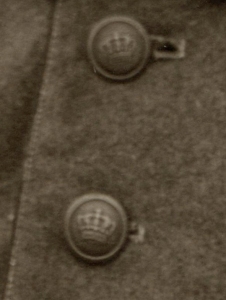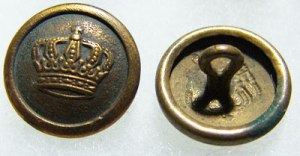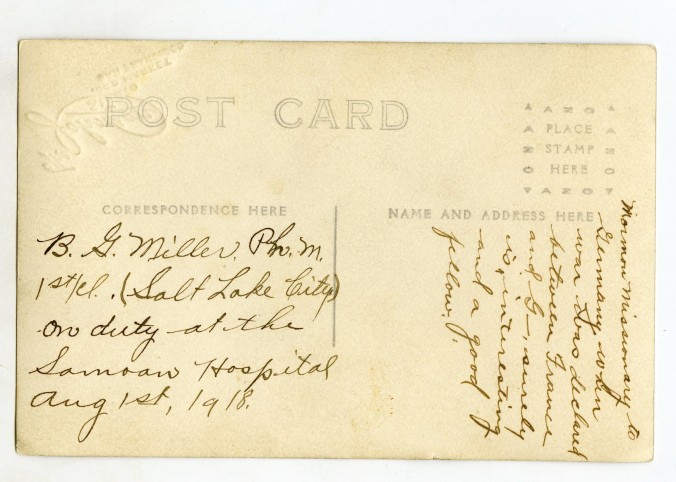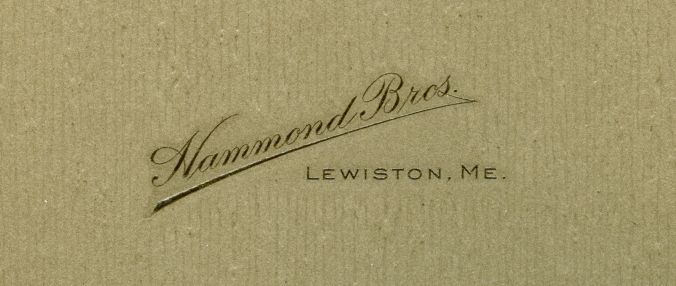The nature of the prolonged war that was WWI and the stalemate and boredom of life in the trenches left a lot of soldiers with time on their hands. Additionally, some soldiers were raised hunting deer, boar and other game in the forests of Europe and North America in the early 1900s. A rifle in the hands of these men could become a weapon that could do immense damage from one concealed trench to another. Today’s post will highlight a United States Marine who was shot through both eyes by a German sniper in October of 1918. But first, please check out this video on snipers during WWI by The Great War, a youtube channel with daily videos about events during WWI.
PFC. Andrew H. Knebel, 18th Company/5th Marine Regiment

PFC Andrew H. Knebel, 18th Co./5th Marines – Lost both eyes during WWI
The story behind the above photograph of PFC Andrew H. Knebel of the United States Marine Corps is one that pulls at the heartstrings of the American populace during the war. I was lucky enough to acquire the photo from a fellow collector/friend of mine who I had helped aid in the identification several years previous. A faintly scribbled name on the reverse of the image took several weeks to properly identify, but we were eventually able to track down the story of the blinded Marine in the photo. Taken in a Paris studio in 1918, PFC Knebel is posed with a French nurse who has taken the time to wheel him (note the wet wheelchair marks) into the studio from a nearby hospital.
Details of Knebel’s wartime epic were tracked down in a Detroit Free Press article from 1919:
ANDREW KNEBEL (1897-1968), of the United States Marine Corps, had been fighting the Germans for ten months before a sniper’s bullet, on October 4, 1918, entered bis left eye, passed through the right. The last, thing he saw on earth was light. The last sight he saw on earth was a clump of wet trees glistening in the morning sunshine in the Champagne sector. But it took a better marksman than the German sniper in one or those trees to pond a shaft through Andrew’s heart. Dan Cupid did that job, which has counteracted the calamity to such an extent that the twenty-two-year-old marine is ready to tell anyone that the law of compensation Is the surest thing in the world. Andrew Knebel, on July 11, married bis nurse. Miss Anna D. Kelley who took care of him at the Baltimore Institute for the Blind. “If I hadn’t been blinded I wouldn’t have met Anna” he philosophized. “And I wouldn’t give her up for the sight, of my eyes not on your life. She’s the dearest, gentlest girl in the world. I guess one reason why I always liked her was because the treated me as if I wasn’t blind at all. She never pitied me. She’s a wonderful gal.
“Are you there, mother, old dear?”
He called, peering with empty eye sockets towards the kitchen, from which came a delectable aroma of baking apple pie. “May I have a light, mother?” “Destiny is a funny old bird,” the bride remarked, while Andrew’s rosy-cheeked mother was lighting his cigarette. “I didn’t want to go to the Baltimore institute to nurse blind boys. I did everything I could to avoid going. I was nursing at the Army Hospital at Camp Wadsworth when the chief superintendent asked for volunteers to go to Baltimore. I shied away from that chief superintendent for a week. But it was no use. She sent four or us.

“The Institute for the Blind at Baltimore is a beautiful place on a 100-acre estate which was. loaned to the government by Mrs. T. Harrison Garrett. When I’d see those boys feeling their way along the paths in that wonderful Elizabethan garden it took all the grit I had to keep from crying all the time and me an army nurse! Everything there is so beautiful that it hurt me to think they couldn’t see their own place.”

Institute for the Blind in Baltimore
“Then I got acquainted with Andy. I had often heard him singing, but hadn’t paid much attention to him. We nurses were pretty busy and we hadn’t much time for anything but work. He has a splendid voice sang second tenor with the battalion quartet, and he just couldn’t quit singing. They call him ‘the songbird of the Marines.”
“We were supposed to be cheerful to the patients, but Andy turned the tables and jollied the nurses. I’m afraid he jollied me a good deal. I got into tho habit of forgetting his handicap. Somehow I never can think of him as being blind. He finds his own collar buttons and adjusts his own neckties, and it’s almost uncanny the way he knows whether his clothes are pressed and bis shoes shiny. When he puts on his dark glasses and goes walking with me I don’t think a stranger would know he is blind. And you just ought to see him dance!”
“I’m being introduced to all sorts of new interests. For example, I never used to read the sporting page In the newspaper. Now, of course, it’s the first page I open, because Andrew is always in a hurry to learn the baseball and boxing news. I’m getting to be quite a fan myself.”
We were sitting in the dining room of the Knebel homestead at Irvington, N. J., where the young couple spent their honeymoon with tho bridegroom’s parents. Whatever life has in store for this youth who lost his eyes in the country’s service, anyone could see that there was a good deal of compensation in his convalescence, while two were engaged in a sympathetic rivalry which could do the most for him.
“Anna understands him so much better than I do,” his mother admitted. “I am so glad to have my boy back that to be doing things for him all the time. I keep reminding him that he’s blind, but his wife seems never to think of that. It’s wonderful to think that she’s going to care for him his whole life.”
Post-Identification
After identifying the photo and posting it to PortraitsofWar, I decided to do a little more digging and was eventually able to link up, via eMail, a few of the family members. I offered the photo to them, but apparently they had an exact copy (in much better condition). Out of gratitude, they sent me a few scans of other photos of Andrew as well as some honey from the apiary at the Monticello!

Andrew Knebel in the 1930s
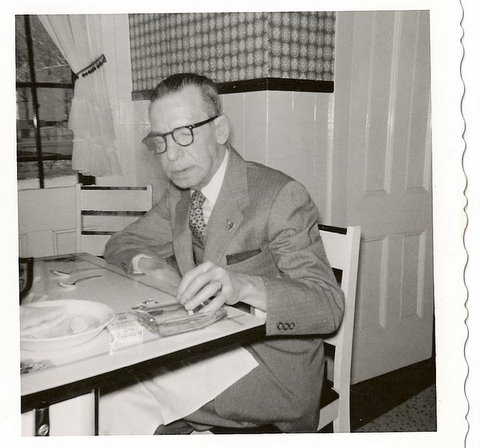
Andrew in the 1950s enjoying a cigarette


